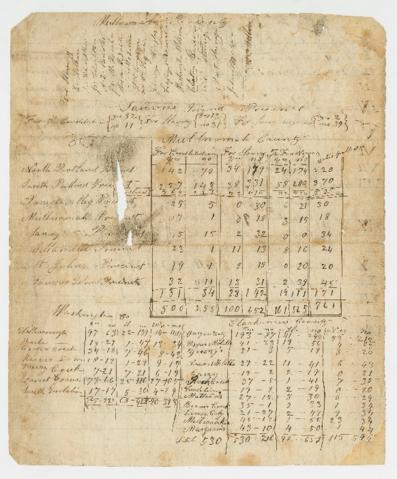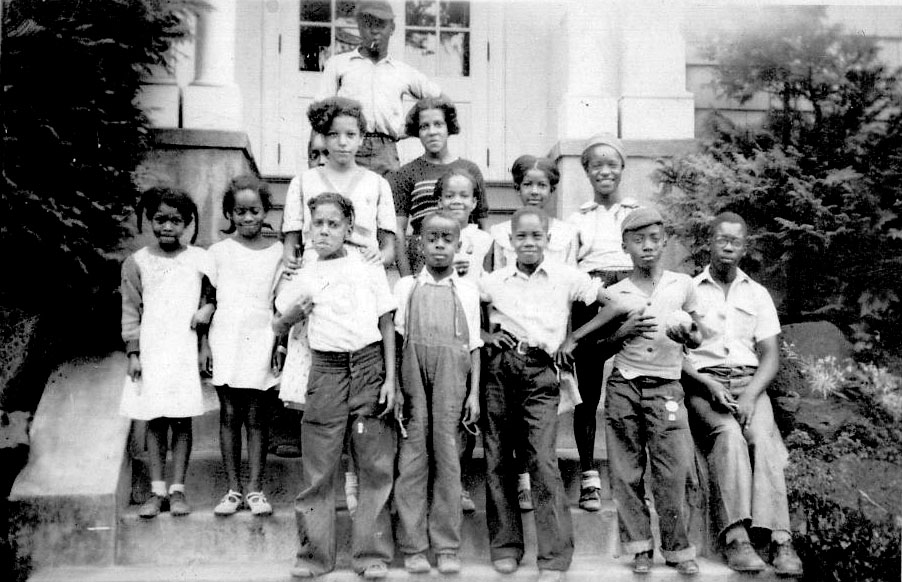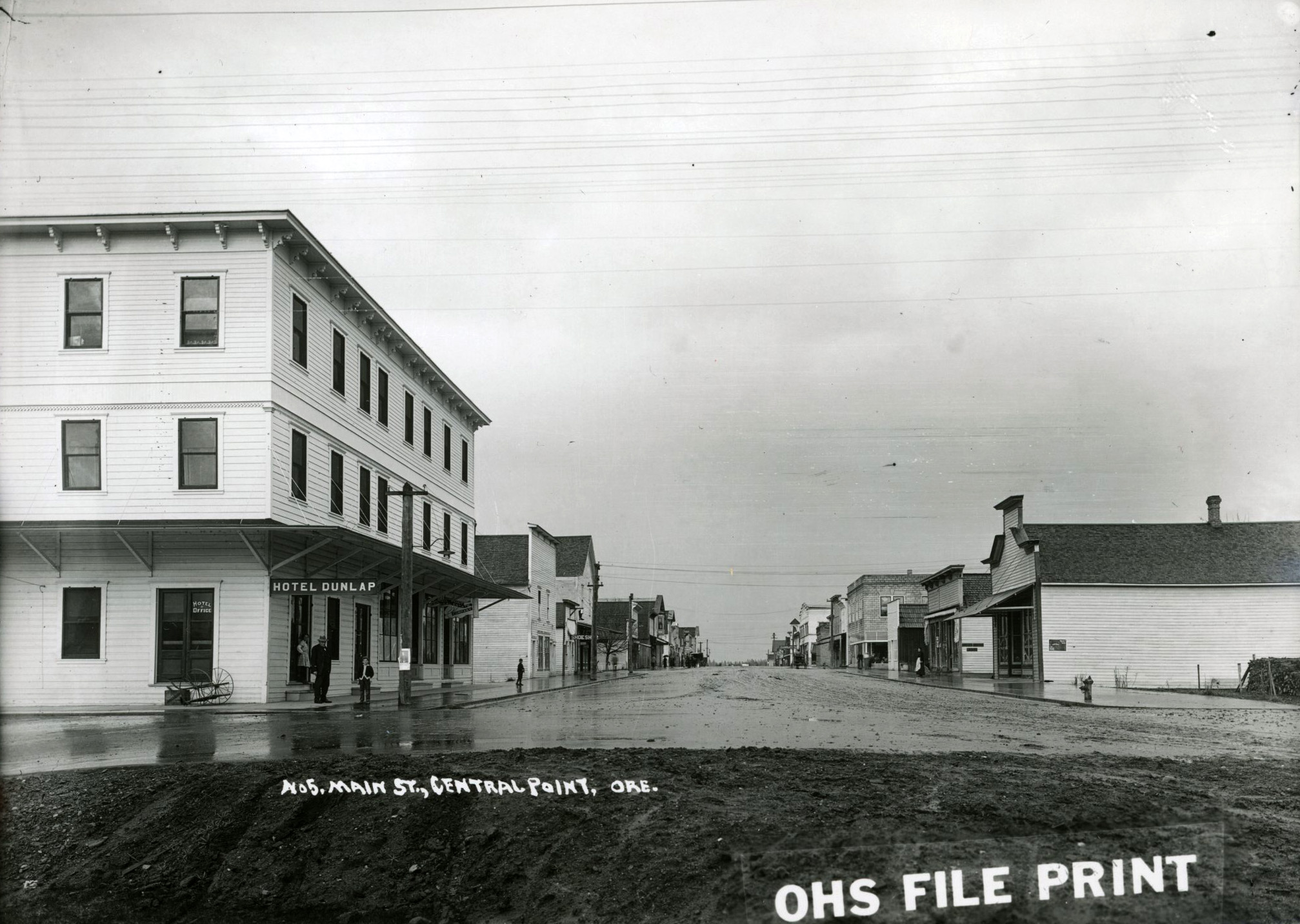Born into slavery in North Carolina in 1818, John Dudley Mathews (née John Mask) was a stock breeder and grain farmer and a respected member of the Little Butte community of Eagle Point in Jackson County. He mapped the route of the U.S. Army military road from the Rogue Valley to Fort Klamath and in 1872 suggested the name Eagle Point for the town near where he homesteaded. When he died in 1885, he left “the record of a life of activity and honorable industry,” a local newspaper wrote. “He will be held in kindly remembrance as a good neighbor and good citizen.”
John Mask was born in 1818 at the Mask Plantation in Anson County, North Carolina. His father was plantation owner Dudley Mask (b. circa 1755). His mother was Mask’s enslaved daughter Penelope (Nellie) Ellender Mask (1798–1882), who was twenty years old when John was born. She had three children through her father: John, Dudley (b. 1821), and Susannah (b. 1823). John was taught to read and write (which was illegal in North Carolina) and to breed and care for horses.
In 1825, Nellie Mask was sent to live with Drury Matthis, who lived a few miles from the Mask plantation. They had two children: Drury (b. 1826) and Mary Amanda (b. 1828). Known as Nellie Matthis, she and her children (who also took the Matthis name) were granted their freedom in 1830, a few years before Dudley Mask died. In about 1831, together with the Michael Wooley family, who lived nearby, they moved to northern Tennessee, where they settled in Tazwell in Claiborne County. Within a few years, John Matthis had learned the roadbuilding trade from Wooley and had married his daughter Elizabeth, who was white—a marriage that was illegal in Tennessee.
Sometime in the 1840s, the extended family moved to western Missouri, where John Matthis learned how to farm from a relative. But there was violence against free slaves in Missouri, and Matthis’s brother apparently was hanged for stealing. In 1853, the family—John, his wife and children, his mother, and his siblings and their families—moved to Oregon Territory. John Matthis led the small wagon train of Black and white families on the California Trail and then the Applegate Trail, without incident, to Jacksonville in present-day southwest Oregon. The group split up, with some staying in Jacksonville because of gold mining and others, including John, moving to the Little Butte country to the northeast. Sometime after John and his family arrived in the Oregon Territory, they changed their name to Mathews.
Because the Provisional Government of Oregon had enacted exclusion laws against Blacks, Mathews could not buy or claim land; but Woodson Tucker, a friend who had been part of the wagon train, claimed 320 acres and allowed Mathews to farm some of it. After Tucker was killed in an accident, Mathews remained on the farm—Oregon’s exclusion laws were rarely enforced—and over time was able to purchase Tucker’s claim. A corner of the land was set aside as a cemetery, where Tucker and eventually Mathews and other family members were buried.
John and Elizabeth Mathews had sixteen children, many of whom remained in the area. He raised wheat as a cash crop, borrowing money and paying it back in wheat or flour. He also built up a herd of prize cattle and horses, which he and his sons drove to Idaho and Montana Territories, where there was demand for them. The family became prosperous landowners in Jackson County and, by the 1870s, one of the largest payers of income tax.
In 1865, when U.S. Army Captain Franklin B. Sprague required a better road from the Rogue Valley to Fort Klamath, he turned to John Mathews to find a new route. The military did not use the road Mathews mapped through Union Creek and the Annie Creek Canyon for very long, and it became the gateway road to Crater Lake from both sides of the Cascade Range.
Mathews loved the eagles that flew above his farm, and he named the new nearby town Eagle Point in 1872. A plaque on North Royal Avenue near Napa Street, erected by the Eagle Point Historical Society, honors Mathews’s contributions to the town: “Dedicated to John Mathews. Pioneer of 1853. Named Eagle Point for the eagles that nested on the bluffs near his home, 1 mile N.E. on Brownsboro Road.”
John Mathews died of typhoid fever in 1885. The John Mathews Pioneer Cemetery was named for him.
-
![]()
John Dudley Mathews.
Courtesy State of Oregon: State Archives -
![]()
John Dudley Mathews stands with a flute.
Courtesy State of Oregon: State Archives -
![]()
1854 Census sheet with the John Dudley Mathews Family listed.
Courtesy State of Oregon: State Archives -
![]()
John Mathews Pioneer Cemetery, Eagle Point.
Courtesy Find a Grave, photo added by Christina Trevino
Related Entries
-
![Applegate Trail]()
Applegate Trail
The Applegate Trail, first laid out and used in 1846, was a southern al…
-
![Ben Johnson (1834–1901)]()
Ben Johnson (1834–1901)
Ben Johnson was a Black pioneer of Jackson County who came to Oregon as…
-
![Black Exclusion Laws in Oregon]()
Black Exclusion Laws in Oregon
Oregon's racial makeup has been shaped by three Black exclusion laws th…
-
![Black People in Oregon]()
Black People in Oregon
Periodically, newspaper or magazine articles appear proclaiming amazeme…
-
![Central Point]()
Central Point
Central Point is located about thirteen miles south of Table Rocks in t…
-
![Letitia Carson (1814-1818–1888)]()
Letitia Carson (1814-1818–1888)
Letitia Carson, a nineteenth-century farmer and homesteader, was one of…
Map This on the Oregon History WayFinder
The Oregon History Wayfinder is an interactive map that identifies significant places, people, and events in Oregon history.
Further Reading
Hegne, Barbara. Saga of the Mask Plantation North Carolina: ”Slaves Journey to Oregon.” N.p: Barbara Hegne, 2014.
Portrait and Biographical Record of Western Oregon. Chicago, Ill.: Chapman Publishing Co.,1904.
Walling, A.G. History of Southern Oregon. Portland, Ore.: A.G. Walling, 1884.
"Large Tax-Payers." Jacksonville Democratic Times, February 21, 1874, p. 4.
Obituary. Roseburg Review, August 28, 1885, p. 3.












